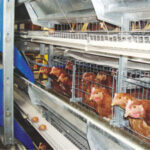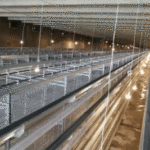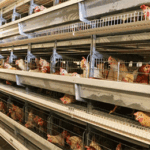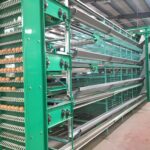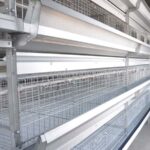Frequently asked questions in the treatment of chicken diseases
After the chickens are sick, some farmers may have failed to find the disease in time to delay the treatment. Some patients have not understood the disease of the chickens, and some farmers directly do not care, and the final loss is heavy. Therefore, farmers should check the health of the chickens in time and find that the disease should be treated early and the cause should be clear. The following authors will come to the common problems in the process of using chicken battery cages to raise chickens, and hope to attract the attention of farmers.
1. The disease is not cured early: due to restrictions on farming and epidemic prevention conditions, the incidence of flocks is inevitable. However, after the onset of flocks, most of the households are unable to receive treatment during the first stage of the disease. For example, when the spirit of the flock is slightly worse, the stool is somewhat abnormal. When the food is slow, they do not know that the flock has become sick. Do not administer medication. When the chickens appeared dead chickens, and the deaths continued to increase, the appetite was greatly reduced and the chickens were sick. At this time, the medication is too late, and the curative effect is of course not good.

2. Mixed infection, simple medication: the incidence of flocks, due to poor physical fitness, decreased resistance, often not only a disease, many times, several diseases. Such as bursal disease and Newcastle disease, E. coli and mycoplasmosis are concurrent. However, mixed infections of several diseases, farmers often only use a drug to treat a disease. A variety of diseases, only one of them. It goes without saying that the disease of the flock is difficult to cure.
3. Treating the disease with enthusiasm and excessively increasing the dose: There is a process in the development of the disease. There must be a process from the beginning of treatment to the cure of chicken disease. The therapeutic drug, whether administered orally or by injection, acts on the pathogen until it is suppressed. It must take some time. This process is called a course of treatment. A course of treatment is usually three to five days. It is unrealistic ideas and practices for a small number of adopters to attempt to feed a meal or inject once by increasing the dose. As a result of this, not only can the disease not be cured at one time, but also because the dose is too large, the chickens will increase the side effects of the drug.
4. Only attack and defend, not consolidate the effect: Many farmers have used one or two days to save the cost of medication, and the condition of the chickens has improved, and they stop using the medicine immediately. As a result, after a few days, the condition has worsened, and the dead chicken has increased. This is the result of not consolidating the curative effect and causing the disease to repeat and aggravate. After repeated illnesses, it is more difficult to cure the disease, because repeated medications often produce resistance. The correct approach should be to continue the medication for a course of treatment until the illness is fully cured.
5. Misjudgment of efficacy: This is also a common occurrence among a small number of adopters. Mainly in two aspects: First, do not understand the role of drugs is to have a time process. In case of medication is correct. Half a day after taking the medicine. It was found that the chicken continued to die or the death increased, and the tablet was considered to be ineffective. Second, when the original medication was working and did not fundamentally improve, it was eager to use the medicine. As a result, the use of “spirit”, mistakenly believe that he used it very well, and later medication is very spiritual. Misjudgment of curative effect is very unfavorable to the inhabitants, which will inevitably lead to drug errors in the treatment of the same epidemic in the future, causing economic losses.
Finally, the author reminds the farmers that there are problems in view of the above. I hope that the majority of the farmers will sum up their experience and learn the lesson. Maximize the occurrence of these problems, reduce economic losses to a minimum, and more effectively improve the economic benefits of aquaculture. If the farmer still wants to know about other poultry farming equipment, he can consult the technicians of the poultry equipment supplier.
